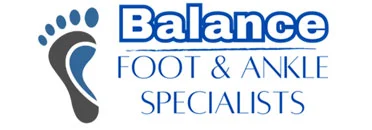Expert Foot & Ankle Treatment from Michigan’s #1 Podiatrist - Balance Foot & Ankle Specialist
Don’t Let Pinky Toe Pain Keep You Off Your Feet!
What Is a Painful Foot Arch and Why Does It Hurt?
If every step sends a sharp sting through the arch of your foot, you’re not alone. A painful foot arch can stem from overuse, flat feet, high arches, or conditions like plantar fasciitis. Understanding the root cause is the first step toward lasting relief—so you can get back to walking, running, and living without discomfort.
Understanding Foot Arch Pain: Causes, Symptoms, and When to Seek Help
Your foot arch supports your body weight, absorbs shock, and helps maintain balance. When that structure is strained or inflamed, pain follows. Common triggers include:
Plantar Fasciitis – inflammation of the plantar fascia ligament
Overpronation or Flat Feet – arches collapse inward, causing strain
High Arches – extra pressure on bones and ligaments
Stress Fractures or Tendonitis – from repetitive activities
Improper Footwear – lack of cushioning or support
Symptoms often present as burning, stabbing, or aching pains that intensify after rest or prolonged standing. Early intervention—rest, stretching, orthotics, or professional treatment—keeps minor issues from becoming chronic problems.
A painful foot arch is almost always due to putting too much strain across your feet over the last few days, weeks or even months. Your foot eventually develops little tears that form microscopic scar tissue; this is always a sign that the tissue across the bottom of your foot is being overworked. This morning pain is also known as plantar fasciitis and it is the most common cause of a painful foot arch and heel, especially in the morning before you get moving. But have no fear; there is a well formulated treatment plan that you can start applying immediately!
Step Into Comfort—Book Your Arch Pain Assessment Today
Stop letting arch pain dictate your day. Our board-certified podiatrists provide customized treatment plans, from advanced therapies to custom orthotics, designed to match your lifestyle and goals. Call (810) 206-1402 or schedule an appointment online and take the first confident step toward pain-free living.
Schedule your EPAT consultation today and take the first step toward pain-free feet!
Watch This Video for our 4 Stage Treatment Plan!
Top-Rated Foot Care Products Recommended by Podiatrists
Trusted Solutions To Soothe, Protect, and Support Your Feet
Finding the best products for managing peripheral neuropathy and diabetic foot pain can make a world of difference in your daily comfort and mobility.
When it comes to managing foot pain from conditions like plantar fasciitis, flat feet, or diabetic neuropathy, the best orthotics can offer crucial support and relief.
Choosing the best shoes for foot conditions like neuropathy, plantar fasciitis, or flat feet is essential for pain relief and long-term foot health.
Follow our 4 Stage Treatment Protocol!
Stage 1 – Make Sure
Make sure the pain due to mechanical causes and not something else!!! A large amount of people start attempting to treating their foot as if they have plantar fasciitis because they heard that they may have it. Please take the time to confirm that you do actually have it before you spend so much time and effort!
Heel Pain Differential Diagnosis Guide
This guide will help you confirm whether your heel pain is due to wear and tear, nerve problems, arthritis problems or traumatic problems. This guide is designed for the heel pain due to wear and tear or biomechanical problems, if you are suffering from any of the other causes of heel pain it is probably best that you see further medical diagnosis that a website like this just can’t provide.
Bilateral Plantar Fasciitis – Follow this guide if both of your feet hurt rather than just one. If both of your feet are in severe pain then it is more likely that you have suffered a back injury or that you have an inflammatory arthritis.
If you are sure that you have heel pain due to biomechanical causes, you should progress to stage 2 of the treatment protocol.
Stage 2 – Decrease Pain
Pain in the Back of the Foot due to Biomechanics
Now that you have confirmed that you have inflammation of the plantar fascia due to biomechanical causes => Follow this treatment guide for 3-6 months until the pain is gone or until you reach stage 3.
Remember if your pain has been there for months or years then you will probably need all of the 6 months or more. The general rule is that the longer you have had the pain => the longer you will need to try conservative treatment!
Make sure you have these before following this treatment pattern(or completed stage 1):
- Heel pain on the inside of the foot or at the sole of your foot
- Pain with initial movement after rest that goes away after a few minutes of activity
- Pain in the morning that goes away with a few minutes of activity
- Increased body weight, increased time on your feet or poor footwear/barefoot walking
- Recommended that you visit your podiatrist and get X-rays, rule out neurological exam, rule out hyperesthesia, check for atrophy of the fat pad, a complete biomechanical exam and history to know for sure.
- Remember to have completed stage 1 in making sure that you definitely have mechanical arch pain and not something else entirely
If you meet all of these criteria – Follow this guide
A) Decrease inflammation through these methods:
- Icing or cool water baths
- Elevation
- Oral Anti-inflammatories (Like Ibuprofen etc.)
- Decreasing your activity level if you were overworking yourself
- Padding and Strapping the tissue to decrease strain
- Eventually a corticosteroid injection may be necessary
B) Keep the inflammation away
- Stretching exercises- Focus on the Achilles tendon and the plantar fascia
- Evaluate your footwear- stop walking barefoot, wearing flats
- OTC (over the counter) arch support or heel cups
- Weight Loss
- Evaluate biomechanics to see why the problem occurred in the first place
For a Complete detailed guide on each of these follow this link:
Pain in the Back of the Foot due to Biomechanics
Keep following this guide for 3-6 months, preferable see your podiatrist to reduce the time necessary for your treatment if possible. Once this amount of time has elapse => move to step 3.
Stage 3- Conservative Treatment Supercharged
Follow this treatment based on whether you are seeing improvement or no improvement
Pain on the Inside of the Foot due to Biomechanics
A) If there is noticeable improvement keep following the treatment outlined in stage 2.
B) If there is little to no improvement then follow up with this treatment protocol.
- Night splints- a device which helps stretch your tissue while you sleep
- A corticosteroid injection to decrease inflammation
- Prescription orthotics
- Immobilization in a cast or a CAM walker
Stage 4- Surgical Treatment
At this point if you haven’t already- you will need to visit a podiatrist for further in-depth studies to rule out nerve disorders, inflammatory arthritides, and stress fractures or finally look into surgery.
- Test for nerve compression and Inflammatory Arthritis
- Extra-corporeal Shockwave Therapy
- Surgery
Foot Surgeries for Heel Pain
Other Treatment Reviews
Graston Technique for Plantar Fasciitis
Active Plantar Fascia Release Technique
Book Your Appointment Today—Relief Starts with One Call
Fast, Friendly, and Professional Treatment You Can Trust
Painful Foot Arch FAQs
Overuse, plantar fasciitis, flat feet, high arches, tendonitis, and poor footwear are leading culprits.
Morning heel or arch pain that eases as you move often points to plantar fasciitis.
Yes. When arches collapse inward (overpronation), the plantar fascia and surrounding tissues strain, causing discomfort.
High arches can place extra pressure on the metatarsals and heel, leading to pain and instability.
Rest, ice, gentle stretching, supportive shoes, and over-the-counter arch supports often ease symptoms.
If pain persists beyond one week of home care, affects daily activities, or intensifies, consult a specialist.
Surgery is rare and reserved for severe cases when conservative treatments fail.
Yes. Runners and dancers frequently experience arch pain due to repetitive impact and strain.
Mild cases improve within weeks with proper care; chronic conditions may require several months of treatment and rehabilitation.

